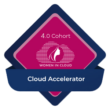Harvard Business Review just published an article by Arianna Huffington entitled “How CHROs Have Met the Moment”. It’s all about how CHROs are helping their companies and employees navigate the COVID-19 crisis. It was striking that the first three examples she cited were all about employee communications. Not HR policies, nor HR practices, nor HR service delivery or HR’s responsiveness. But communications.
It goes to show that while HR is being called on to play a major, if not the major, role in “The Great COVID Reset”, one of the most important aspects of their effort is employee communication.
As Arianna wrote: “Right now, CHROs have the wind at their back. We have been talking about putting people first and bringing our whole selves to work for a while now, but these are no longer abstractions.”
A few days after the article was published, I presented to a group of about two dozen CHROs. They all mentioned how much time and energy they were spending on employee communications, and how their staffs were struggling to keep up with demand.
One CHRO told of how, when COVID-19 hit, it took her team two weeks of effort to set up and launch a portal to serve as the single-source-of-truth for all things COVID. Yet after it was launched, they learned that the employees didn’t even use it! Instead, the HR call center blew up with tons of questions - all that were answered on the HR portal. And employees seemed oblivious to the intranet.
In answering the question “Why? What went wrong?”, I think I led a revolution of sorts.
“Let’s face it,” I asked the CHROs, “Does anyone really get up in the morning and check their intranet or HR portal? Building out portal pages, or redesigning intranets is essentially like putting lipstick on a pig.”
There were chuckles of agreement and head nods on the Zoom screen. But what’s the alternative, many asked? More email? More town halls? Certainly not.
The answer lies in taking a lesson from Marketing: The most effective way to reach your employees is to put your content where they will see it most frequently, most easily, and most naturally. And that place is overwhelmingly: Microsoft Teams and Office 365. That’s right, Teams is the new intranet - the preferred employee communication channel that’s usurping the old Intranets and HR portal before our very eyes.
In addition to a primary intranet area for all COVID-19 content, use a content syndication solution that can take a single message and push it out to multiple channels, and curates multiple sources into the trusted core.
There are many reasons for this transformation, but one of the most basic is this: Intranets and HR portals just can’t meet today’s employee communications needs: they are solutions that have been around since the mid 1990s, viewed by employees like an old Motorola flip phone - an arcane vestige of the AOL-era, cluttered with mostly irrelevant, often outdated, and always hard to find Corporate content. Every few years the intranet gets a new paint job, but the user experience hasn’t kept up with what people have outside of work. Even more frustrating, most employees equate using their HR portal to a trip to the DMV - employees only go when they have no other choice. Unfortunately, they find it confusing and tough to navigate, and the end result is that they give up and contact the HR service center.
Simply put, Intranets and HR portals alone can no longer meet the communications needs for the Great COVID Reset - or serve in a significant role as a key digital resource for employees that they once were. Now is the time, with business transformation on overdrive, to finally embrace HR’s use of modern solutions that meet the needs of today’s employees: dynamic, seamless, up-to-date, and collaborative.
HR needs to make the communication experience for employees look and feel more like what they get outside of the work experience – in other words, treat employees like customers. This means HR and employee communications needs to adopt marketing concepts like content marketing, content syndication, content curation, and user analytics. They need to make official ‘single-source-of-truth’ content reliably searchable, and discoverable, on channels that are NOT only “owned” by official HR or employee communicators. That’s right, they need to get their content distributed to employees directly in the flow of employee work - by having corporate & HR content distributed on far more channels than those managed by HR or Employee communications.
Let’s face it, if content is published on your Intranet or HR portal but no one reads it, does it really exist?
But isn’t this a message for CIOs? Isn't It the CIO’s job to understand how Teams works? Isn’t it their job to relay which digital channels are more effective and not? No, not really. The latest employee/HR communications solutions are already mainstream in the marketplace, and you don’t need an IT degree, or even knowledge of coding, to use them.
So I encouraged my colleagues to look into solutions that integrate with Teams, like ours. And I encourage you to do the same. Free your content from the intranet and get it into places like Teams. This one change will benefit not only you, but your employees as well.
Velaku dramatically improves the employee experience by engaging employees with content that appears right in the flow of their work. The results are personalized, contextualized and seamless for the employee. Visit www.velaku.com or contact info@velaku.com to schedule a demo today.





